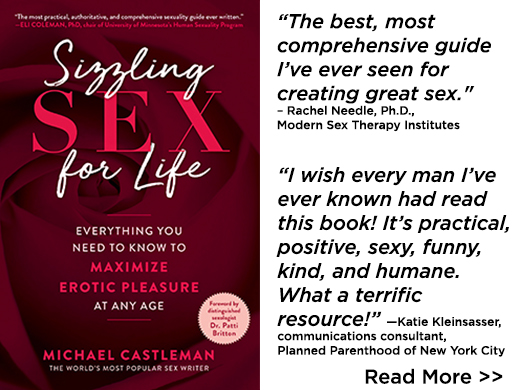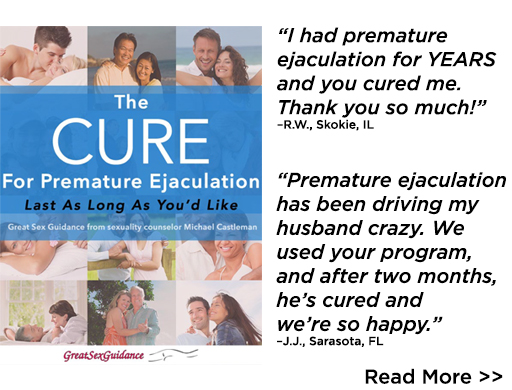
For erection problems, low-intensity shock-wave therapy looks promising. In some people with kidney stones, low-intensity shockwave therapy (LIST) breaks them up. And in some with heart disease and fractures, LIST coaxes the body to produce new blood vessels that help with healing. Recently, this latter effect has been shown to improve erections in some men with erectile dysfunction (ED). The new vessels bring more blood into the penis, which helps with erections. LIST is the first new therapy for ED since Viagra’s approval 20 years ago. LIST is still experimental, and not yet widely available, but it’s fairly easy to administer, and if you’re a man with ED, it just might help.
LIST
The story of LIST for ED began in 2010 in Haifa, Israel, where researchers tried it on 20 men, average age 56. They’d all been diagnosed with vascular ED, that is, the problem involved not damage to the erectile nerves, but poor blood flow into the penis. The men received two LIST treatments a week for three weeks, then they took three weeks off, after which they were repeated. One month after the conclusion of the second treatments, the researchers employed standard measures to analyze the men’s erection function. The results were intriguing. All 20 showed some improvement—no porn-star erection miracles, but greater rigidity and longer duration. The improvements help up for six months and LIST caused no side effects.
Then the Israelis then tested LIST on a larger group, 29 men, who were older, average age 61, with worse ED. Again, the treatment produced statistically significant effectiveness. Almost three-quarters of these men (72 percent) gained erections firm enough to accomplish vaginal intercourse.
Since then, more than a dozen studies have tested LIST for ED. All but one have shown benefit. Some examples:
- Researchers in Hong Kong tried LIST on 30 men, while 28 others received sham therapy (ultrasound). The LIST group showed significantly greater erection improvement.
- Indian investigators asked 135 men with ED to stop using all erection medication for a month and then treated 40 with a placebo while 95 received LIST. By the end of the trial, the placebo group showed scant improvement, but three-quarters of the LIST men could raise erections sufficient for intercourse.
- The Israeli researchers recruited 55 men whose ED did not respond to erection drugs. They gave a placebo to 18 and treated 37 with LIST. None of the men in the placebo group showed any improvement, but more than half of those treated with LIST (54 percent) were able to return to having vaginal intercourse. The scientists then treated the placebo group with LIST. More than half (56 percent) were able to accomplish vaginal insertion.
- Greek investigators treated 23 ED sufferers with a placebo and 23 others with LIST. One month after treatment 13 percent of the placebo group showed significant erection improvement, but in the LIST group, 57 percent.
- The only trial to show no benefits was a Danish study involving 126 men. But it involved treatment once a week, not the twice-weekly regimen used in most other trials.
- Chinese researchers working with a team at the University of California, San Francisco, analyzed 14 studies of LIST for ED that included a total of 833 participants. Their conclusion: “The evidence showed improvement.”
- Finally, Chinese researchers compared LIST with vacuum treatment. The latter involves inserting the flaccid penis into a plastic tube and then using a squeeze-bulb hand pump to remove most of the air. This creates a near-vacuum in the tube that draws extra blood into the penis. Vacuum devices are a standard treatment for ED in men who do not respond to erection drugs. In the Chinese trial, LIST worked as well as vacuum treatment.
LIST involves applying a gel to the skin of the penis and then pressing a wave-generating probe into the gel. During 20-minute treatments, the doctor moves the probe around the penis. The treatment causes no pain, just a tingling sensation, so pain medication and anesthesia are not necessary. No significant side effects have been reported.
LIST is still experimental, so right now, not many urologists offer it. Ask yours.
If you’ve had LIST, I’d be very interested to hear about your experience. Please comment.
You may also be interested in reading the article Erection Myths and Truths About Erections.
References:
Fojecki, G.L. et al. “Effect of Linear Low-Intensity Extracorporeal Shockwave Therapy for Erectile Dysfunction: 12-Month Follow-Up of a Randomized, Double-Blinded, Sham-Controlled Study,” Sexual Medicine (2018) 6:1.
Fojecki, G.L. et al. “Effect of Low-Energy Linear Shockwave Therapy on Erectile Dysfunction: A Double-Blinded, Sham-Controlled, Randomized Clinical Trial,” Journal of Sexual Medicine (2017) 14:106.
Gruenwald, I. et al. “Low-Intensity Extracorporeal Shockwave Therapy:
A Novel Effective Treatment for Erectile Dysfunction in Severe ED Patients who Respond Poorly to PDE5 Inhibitor Therapy,” Journal of Sexual Medicine (2012) 9:259.
Kalyvianakis, D. et al. “Low-Energy Shockwave Therapy for Erectile Dysfunction: A Randomized Clinical Trail Comparing 2 Treatment Protocols and the Impact of Repeating Treatment,” Journal of Sexual Medicine (2018) 15:334.
Kalyvianakis, D. and D. Hatzichristou. “Low-Energy Shockwave Therapy Improves Hemodynamic Parameters in Patients with Vasculogenic Erectile Dysfunction: A Triplex Ultrasonography-Based, Sham-Controlled Trial,” Journal of Sexual Medicine (2017) 14:891.
Kitrey, N.D. et al. “Penile Low-Intensity Shockwave Treatment is Able to Shift PDE5i Non-Responders to Responders: A Double-Blind, Sham-Controlled Study,” Journal of Urology (2016) 195:1550.
Lu, Z. et al. “Low-Intensity Extracorporeal Shockwave Treatment Improves Erectile Function: A Systematic Review and Meta-Analysis,” European Urology (2017) 71:223.
Qi, T. et al. “Comparison of the Effects of Extracorporeal Shockwave Therapy and a Vacuum Erectile Device on Penile Erectile Dysfunction: A Randomized Clinical Trial,” Medicine (Baltimore) (2017) 96:e8414.
Srini, V.S. et al. “Low-Intensity Extracorporeal Shockwave Therapy for Erectile Dysfunction: A Study in and Indian Population,” Canadian Journal of Urology (2015) 22:7614.
Vardi, Y. et al. “Can Low-Intensity Extracorporeal Shockwave Therapy Improve Erection Function? A 6-Month, Follow-Up Pilot Study in Patients with Organic Erectile Dysfunction,” European Urology (2010) 58:243.
Vardi, Y. et al. “Does Low-Intensity Extracorporeal Shockwave Therapy Have a Physiological Effect on Erectile Function? Short-Term Results of a Randomized, Double-Blind, Sham-Controlled Study,” Journal of Urology (2012) 187:1769.
Yee, C.H. et al. “Extracorporeal Shockwave Therapy in the Treatment of Erectile Dysfunction: A Prospective, Randomized, Double-Blinded, Placebo-Controlled Study,” International Journal of Urology (2014) 21:1041.




